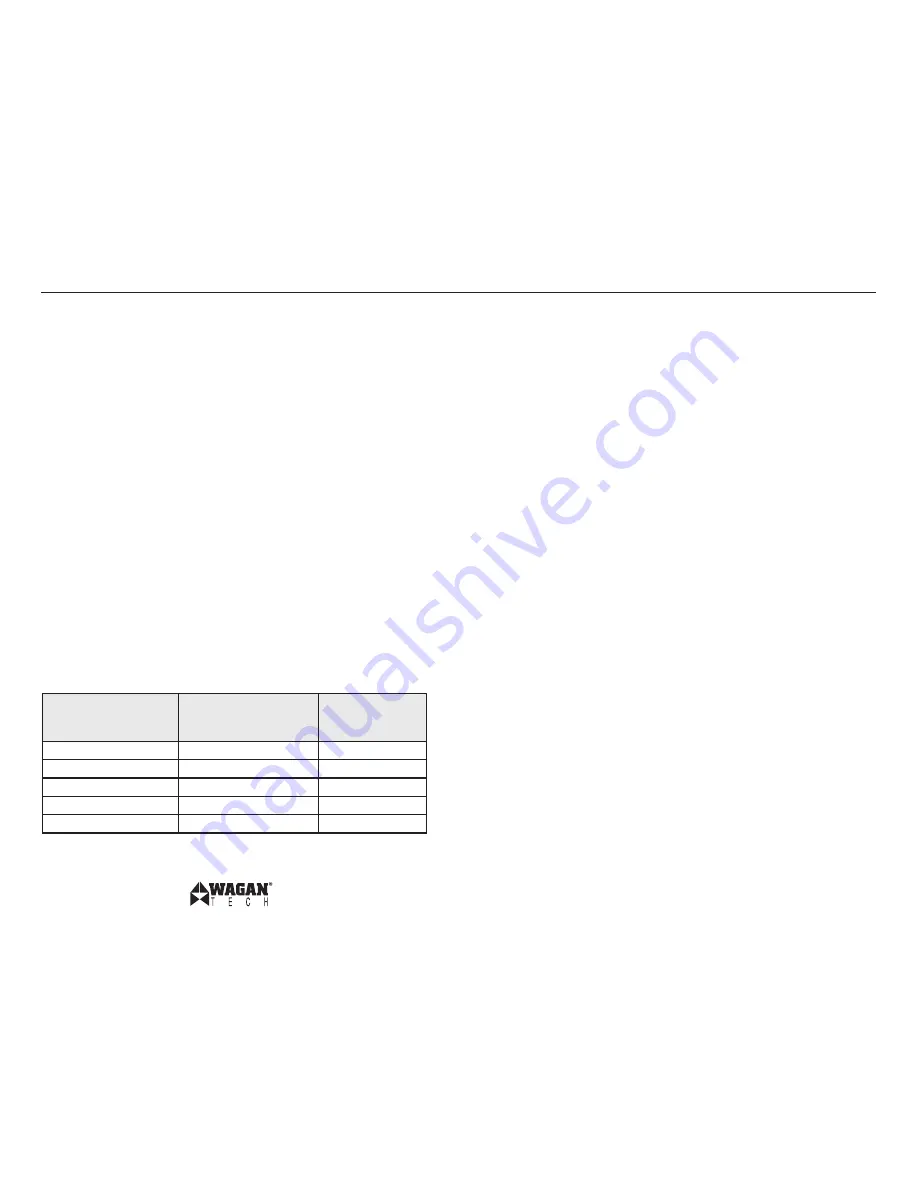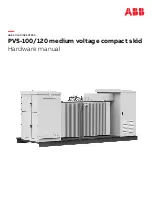
Elite
™
5000W—Pure Sine Inverter
by Wagan Tech
11
www.wagan.com
User’s Manual—Read before using this equipment
©2012 Wagan Corporation
All Rights Reserved.
Wagan Tech and
wagan.com
are trademarks used by Wagan Corporation.
12
DC Cable Gauge
Minimize cable losses by using the thickest wire available and the shortest
practical length.
Measure Round Trip (RT) cable distances in feet. Round Trip cable distance is
battery to inverter and back to battery. If the application is in a vehicle with
engine operating, use the supplied cables for round trip distances up to 5 feet.
Use a recommended ANL fuse and Fuse holder. Fuse at 600 Amps. ANL are
quick acting and sealed so they do not spark when they blow. Place fuse no
more than one foot from the Positive (+) terminal of the battery.
The cables that are supplied with the inverter can be used for full wattage
applications that have the batteries under constant or frequent charge (mobile
applications). The supplied cable has an electrically equivalent 600 Amp ANL
fuse attached.
If the inverter and the battery are positioned within two to three feet of
each other, a minimum of “00” gauge wire should be used to make DC
connections.
Notes:
• Include distances between the fuse block terminals in measuring total
cable length.
• Total Round Trip (RT) means total Pos and Neg cable lengths to battery.
Cable Lengths and Gauges for full 5000 Watt Output
Total RT Length in Feet,
Inches and Centimeters.
AWG (American Wire
Gauge) and Thousand
Circular Millimeters (Kcml)
Diameter of copper
conductor
2 Ft (24 in) (61 cm)
00
0.375 in (1 cm)
4 Ft (48 in) (122 cm)
0000
0.52 in (1.3 cm)
6 Ft (48 in) (182 cm)
359 Kcml
0.68 in (1.7 cm)
10 Ft (48 in) (304 cm)
500 Kcml
0.81 in (2.1 cm)
12 Ft (48 in) (365 cm)
700 Kmcl
0.96 in (2.4 cm)
Connecting the Inverter
Loose connections will result in a severe voltage drop that can cause damage
to connectors, conductors, and insulation and can cause sparking. Reverse
polarity connection will blow the fuses in the inverter and can permanently
damage to the inverter. Damage caused by reverse polarity will void the
warranty.
Installation Procedure
1. Mount the inverter in a secure location. If the inverter is to be mounted
on a wall, mount it horizontally. Make sure that the front and rear of the
inverter has free air flow.
2. Make sure the cables are the proper gauge and have the fuse holder as
close to the battery bank’s Positive (+) terminal as possible.
3. Install the fuse in the Positive (+) cable.
4. Make sure the ON/OFF switch located on the front panel of the inverter
is in the OFF (0) position.
5. Locate the ground lug terminal on the inverter. Connect an insulated 10
gauge copper wire to the terminal. The other end of the ground wire
is connected to a “proper” grounding point. Use the shortest practical
length of wire. Connect this wire to the chassis of your vehicle or to the
grounding system in your boat. In a city, the ground wire can connect
to a metal cold water pipe that goes underground. In remote locations,
the ground wire can be connected to an “earth ground”. This can be an
attachment to a foot long copper clad metal rod driven into the ground.
In the unlikely event of a short circuit, operating the inverter without
proper grounding can result in electrical shock. Do not directly connect
this ground wire to the Negative (−) DC Terminal of the inverter. As an
alternative grounding connection, use the Negative (−) terminal of the
battery.
NOTE: Crimp-on ring terminals are required on all cable ends. The cable
ends need to be stripped of insulation for 1/2 inch before crimping on ring
terminals. Select a crimp terminal size to fit the gauge cable and inverter
and battery terminal connectors. After crimping make sure that the cable
connectors are secure on the cables so there are no loose connections.




























